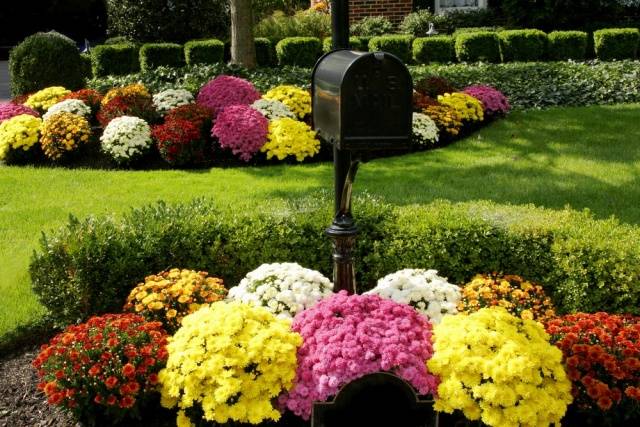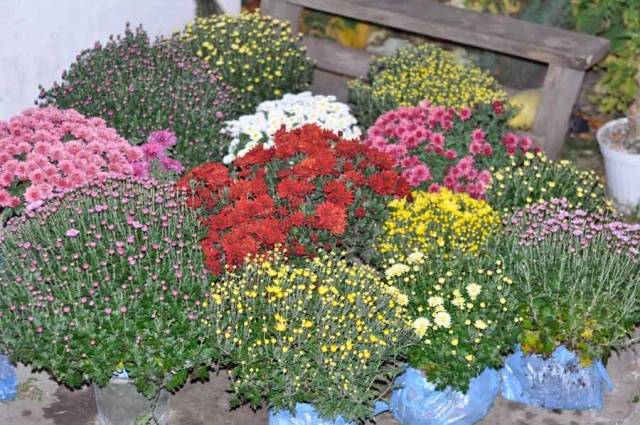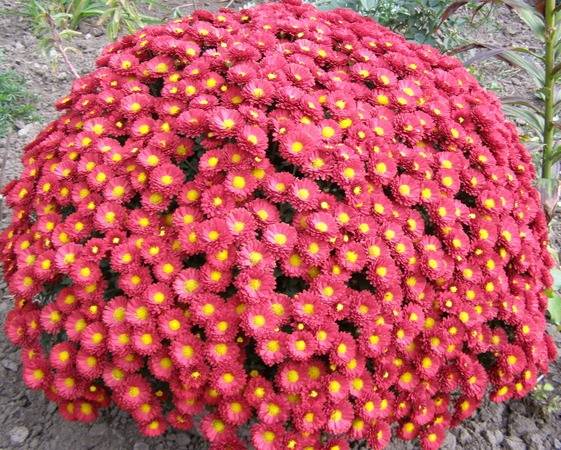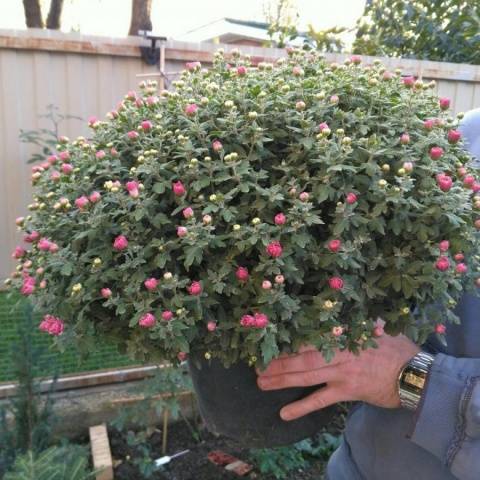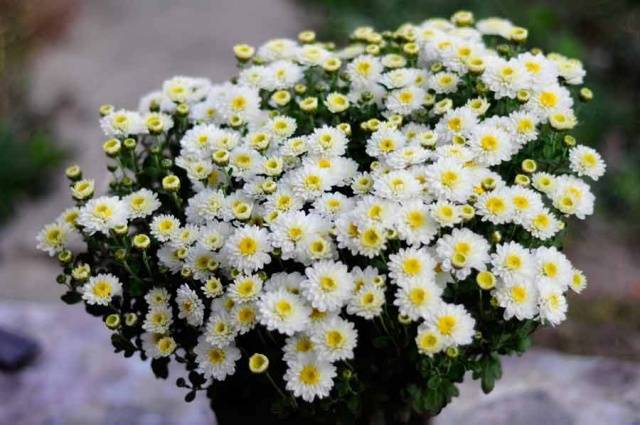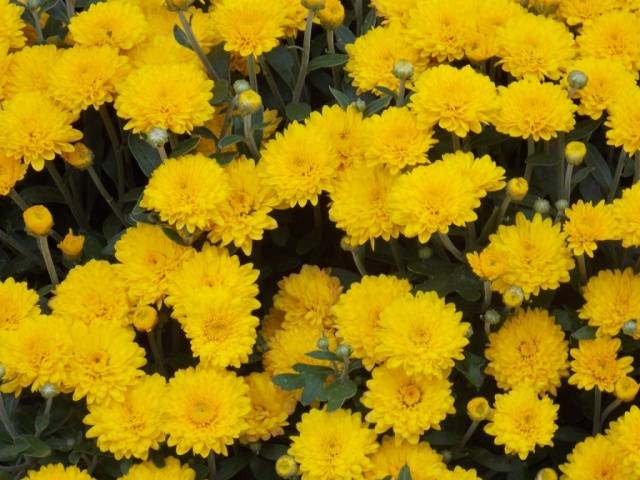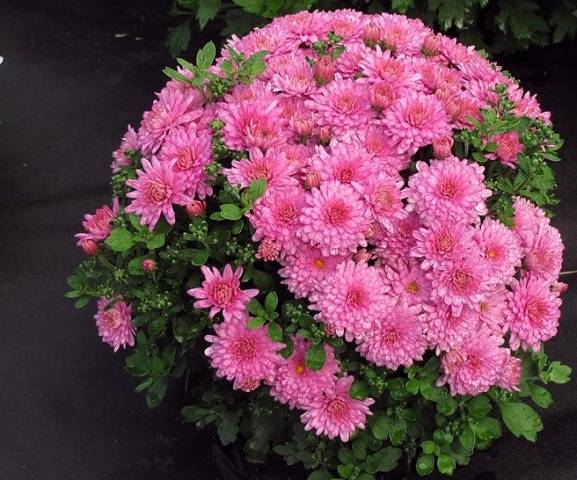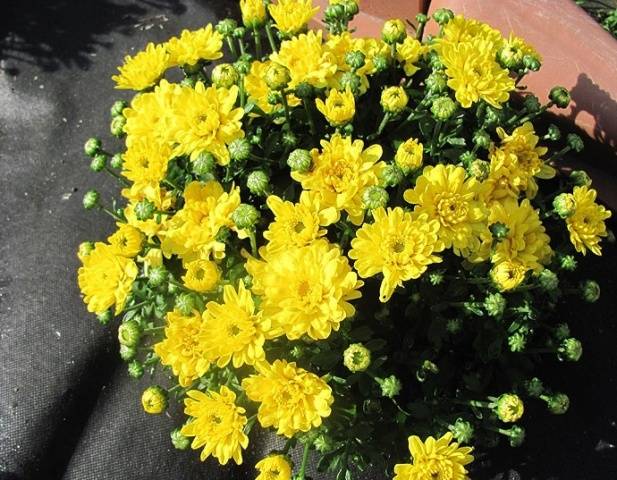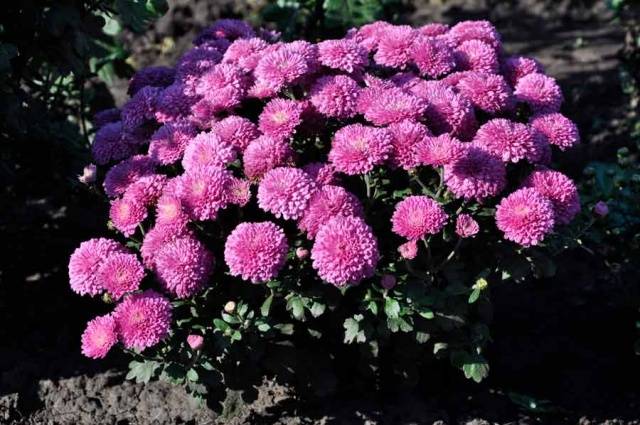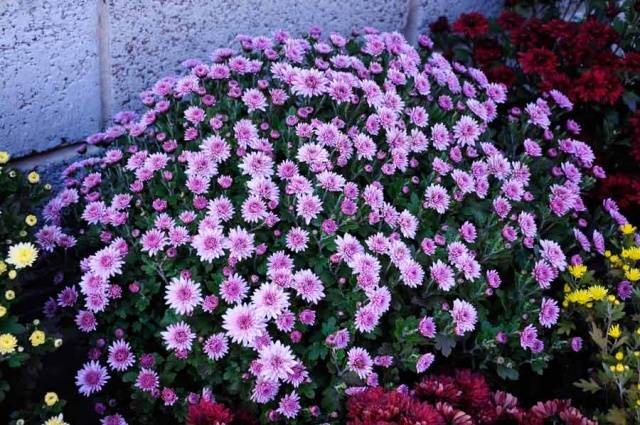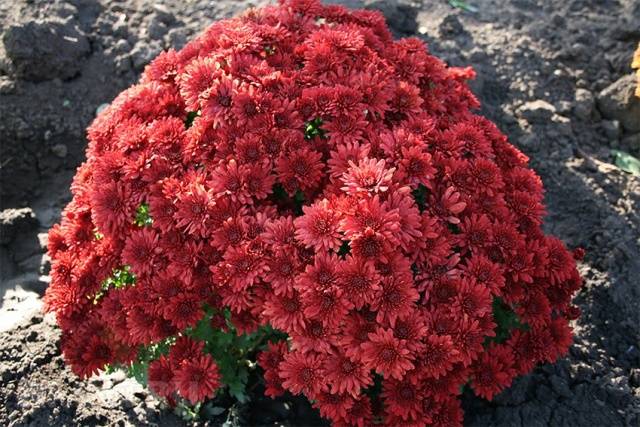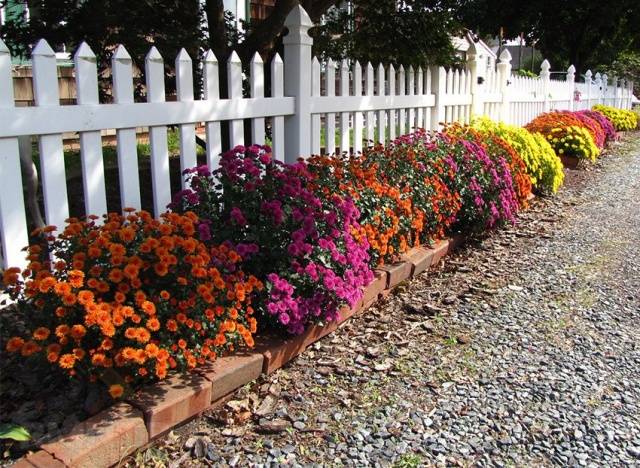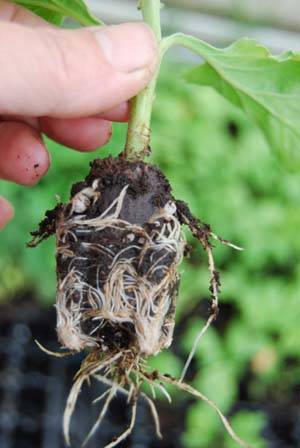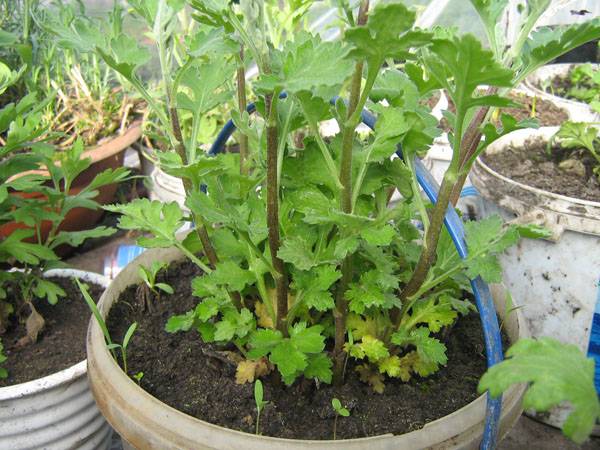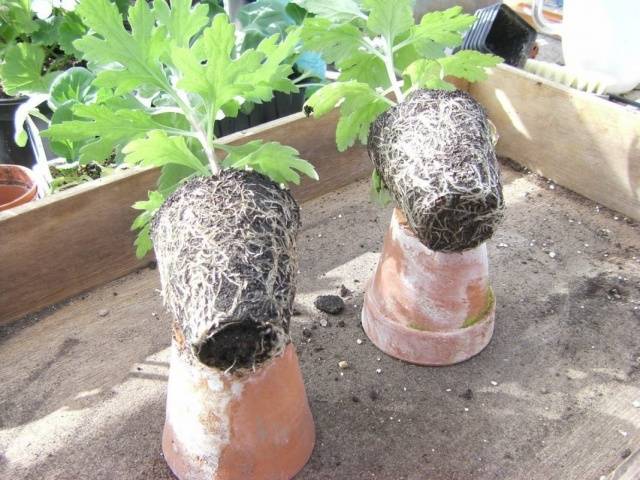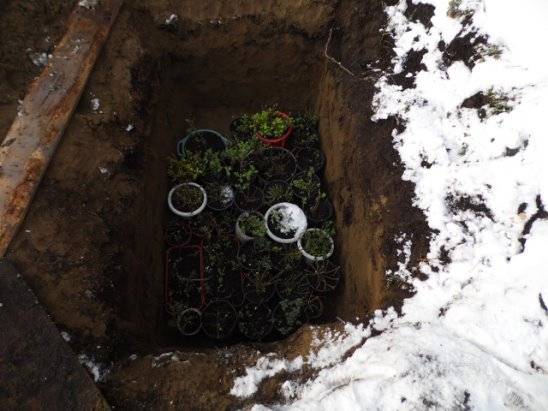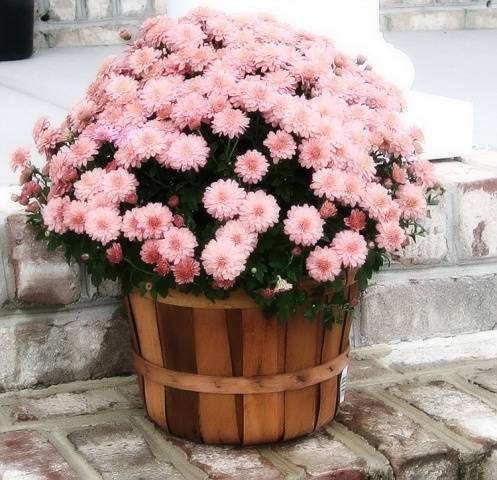Chrysanthemums are one of the most ancient ornamental plants. If a thousand years ago these flowers were grown for their medicinal properties, today it is customary to decorate the local area with chrysanthemums of different varieties and shades, to use them in landscape design. One of the newest, but already very popular, varieties of chrysanthemum is the spherical Multiflora. Distinctive features of this group of chrysanthemums are the round, regular shape of the bush and many small inflorescences. Spherical varieties are very unpretentious, in their line there are many species with different stem heights, hundreds of shades and shapes. However, Multiflora also has disadvantages, and the most important of them is mediocre frost resistance.
More details about the perennial garden spherical chrysanthemum, the rules for planting and caring for it will be described in this article. Below you can find out about the varieties and varieties of this flower, as well as how to preserve the globular chrysanthemum in winter.
Characteristics of the species
Chrysanthemum multiflora belongs to the Asteraceae family and has small-flowered inflorescences. In the process of development, the bushes of this plant independently take on a rounded shape, which explains the origin of the second name of the flower - garden spherical chrysanthemum.
Chrysanthemum perennial globular is a relatively young species, but already has several hundred varieties and hybrids. This flower is loved, first of all, for its decorativeness - compact bushes of the correct shape do not need to be formed and pruned, moreover, they can bloom in absolutely any shades (now there are spherical chrysanthemums with blue and even green flowers on sale).
The spherical Multiflora has many advantages:
- Long term "life" - a perennial flower can grow in one place for 4-5 years, after which it must be divided and simply transplanted to another place.
- Multiflora is unpretentious, it develops well on any soil, and the only thing that determines the beauty of a flower is a sufficient amount of sun.
- The high decorativeness of neat spherical bushes makes it possible to widely use Multiflora both in landscape design and for decorating balconies, gazebos, and interior interiors.
- The variety of varieties and shades makes it possible to create interesting combinations using spherical varieties.
- The flowering time of the spherical perennial chrysanthemum is quite extended - the flowering of the species can last from late summer until the first severe frosts.
Classification
Spherical bushes of flowering chrysanthemums can be found in gardens and parks, in flower beds and alpine hills, they are often grown in flowerpots or boxes - all this is one variety, only plant varieties differ.
About four thousand varieties and hybrids of Multiflora are classified according to several criteria. One of the main signs of dividing chrysanthemum varieties into groups is the size of the bush. Depending on the length of the stem, there are:
- dwarf chrysanthemums, which can also be called undersized - the bushes of these varieties usually grow to a maximum of 25-30 cm;
- medium-sized spherical chrysanthemums can have a height of 30 to 50 cm;
- tall varieties form round bushes with a diameter of about 60-70 cm.
By the way, novice growers should understand that the Chinese chrysanthemum and Multiflora - This is the same. But Korean chrysanthemums are another group: the inflorescences of these plants are larger, and the bushes are not able to take the shape of a hemisphere without outside help.
The flowering time of spherical chrysanthemums may also differ slightly, but the common quality of all varieties is their ability to bloom until the real cold. By choosing Multiflora with different flowering periods, you can create a unique composition of these flowers and enjoy their bright colors from late summer to the last days of autumn.
Given the flowering time, varieties of spherical chrysanthemums are divided into the following groups:
- early flowering, blooming their buds already at the beginning of August;
- mid-flowering varieties delight with abundant flowering in mid-September;
- late varieties bloom not earlier than the first days of October and bloom until snow and frost.
There are many varieties of perennial Multiflora, below are just a few of them.
Branbeach white
The variety is medium-sized - the bushes of this chrysanthemum can grow up to half a meter in height. The inflorescences of the plant are white, small-flowered, numerous. Flowering time is mid-August.
Branindio Branindio
This globular chrysanthemum blooms in mid-September. Her inflorescences are golden yellow, very bright, in perfect harmony with the tones of the autumn garden. The diameter of the bushes is decent - about 50 cm.
Branbeach Sunny
An early flowering variety with bright yellow inflorescences. Bushes of medium height - about 0.5 meters. The buds open in the second half of August.
Branhill red
Compact early flowering bushes, the height of which does not exceed 40 cm. The flowers of this Multiflora are of a beautiful wine-red hue.
Branfountain salmon
In mid-September, this medium-sized variety begins to bloom with bushes about 50 cm tall. Chrysanthemums are covered with delicate pink flowers.
Branfountain lemon
Lemon yellow globular flowers bloom in mid-September. Medium-sized bushes - about 45-50 cm in diameter.
Branfountain purple
This variety of chrysanthemums has lilac inflorescences. Bushes of medium size, bloom in September.
Branbeach lilac
Very bright lilac-pink inflorescences of Multiflora, blooming in the second half of September. The bushes are quite high - about 50 cm.
Branbeach orange
The flowers are large enough, with a rich orange hue. Multiflora blooms in September.
A photo of spherical chrysanthemums of various varieties once again proves their uniqueness. Such a variety of shades and shapes allows you to effectively inscribe spherical chrysanthemums in almost any exterior of the site and garden.
Growing rules
There is nothing difficult in planting and caring for spherical chrysanthemums - these are very unpretentious flowers. The only difficulty lies in preparing Multiflora for the winter period. The method of wintering is largely determined by the climatic conditions of a particular region and can be chosen by the florist independently.
Reproduction and planting
Ball chrysanthemum can multiply in several ways, but the most effective and affordable option is the division of an adult plant. Given the low frost resistance, the planting of spherical chrysanthemums in the fall is not carried out. The optimal time for planting these flowers is mid-April. (the plant can withstand small return frosts without problems).
The planting technology is recommended as follows:
- Prepare the soil before planting flowers. The soil for Multiflora should be loose and moderately nutritious. Too much fertilizer will lead to an increase in green mass and poor flowering, so you should not be zealous with fertilizing. It is enough to add a little peat or humus to the soil.
- With an interval of 50-60 cm (depending on the height of the spherical chrysanthemum), holes are made. The holes are about 40 cm deep.
- At the bottom of each hole, you can pour a handful of coarse river sand - it will act as a drainage. A little fertile soil should be poured on top and the wells should be well poured with water.
- The seedling is placed in the center of the hole, its roots are straightened and carefully sprinkled with earth. Do not bury chrysanthemums too deeply - the root system of these flowers is of a surface type.
- For tall varieties, supports may be required, it is better to install them immediately at the time of planting.
The planting is over, now it remains to provide the spherical Multiflora with competent care.
How to care for flowers
The spherical chrysanthemum is not capricious - it is very simple and easy to care for this flower:
- Since chrysanthemums are planted in spring, it is recommended immediately after planting shade from the burning sun... For these purposes, it is better to use a non-woven material, it is positioned so that the fabric does not touch the Multiflora leaves.
- To water chrysanthemum is often necessary, because it is hygrophilous. It is better to use rainwater or settled water for irrigation. If this is not possible, you can add two drops of ammonia (per bucket) to plain tap water to soften it.
- In the year of planting, Multiflora is not fertilized. Subsequently fertilize it is recommended twice a season: at the initial stage of the growing season (mullein or humus) and in the bud-laying phase (50 grams of superphosphate for each square meter of the flower bed).
- If chrysanthemum bushes are planted in partial shade or grown from seed (in this case, there is a high risk of loss of genetic qualities), you may have to adjust the shape plants. Immediately after planting, the top is plucked out of the sprouts, after three weeks the procedure is repeated, removing the entire upper part of the central shoot.
- Of diseases and pests Multiflora is most often attacked by powdery mildew and caterpillars. For the purpose of prevention, it is recommended to observe the irrigation regime, loosen the soil and spray with special preparations.
Wintering rules
How to grow spherical chrysanthemums is clear, now it remains to figure out how to preserve them until next spring. These perennial flowers could easily grow in one place for 4-6 years, but in most Russian regions this is impossible - the bushes have to be dug up annually for the winter.
In the warmest regions, chrysanthemums can winter in flower beds or in pots. Before the onset of cold weather, it is recommended to cut the stems of flowers to 10-15 cm and cover their roots with a thick layer of organic mulch.
Where winters are more severe, drastic measures cannot be avoided - spherical chrysanthemums will have to be dug out for the winter. To prolong the variegated flowering, you can install a plastic frame around the bushes. When the stems begin to dry out, they are cut off and the rhizomes are dug up.Flowers are placed in sand or in soil mixed with sawdust, sand, peat (for better moisture retention) and removed to a dark, cool place.
At the end of March, spherical chrysanthemums are taken out of shelters and placed under the sun's rays in a warm place, so the flowers will begin to wake up. When the ground warms up well enough, you can return Multiflora to the flower bed.
Conclusion
Ball-shaped perennial chrysanthemums are a great way to decorate a garden or flower bed. These flowers are very unpretentious, delight with a variety of varieties and species, and they have only one drawback - weak frost resistance.
